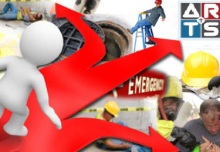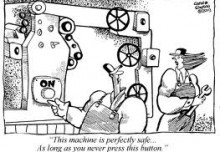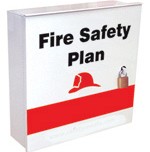 Fostering a Culture of Safety and Caring
Fostering a Culture of Safety and Caring
Whether your company is new, young or has been around for many years, fostering a culture of safety and caring can be tricky however, it’s not too late to start implementing excellence in safety. A successful safety program requires presence of community and team work with open and effective communication flowing through all levels of the organization. When safety and communication are not a part of cultural habit, employees find it awkward to correct each other and difficult to report the details of a near miss. When details are not reported, management will have extreme difficulty fixing the issue.
A safety program starts at the top as a core company value. Each member of the leadership team must believe in an injury free workplace as a core company value and more importantly, they must demonstrate their belief in an injury free workplace. Core values are traits or qualities that you consider not just worthwhile, they represent an organization’s highest priorities, deeply held beliefs, and fundamental driving forces now and forever. The executive leaders and managers set the tone in establishing a quality work environment for their employees. It’s not simply telling the employee’s safety is important, it’s in the proof. You have got to show employees’ safety truly is first. Without excellence in safety, you won’t have excellence in production.
Start everyone with a clean slate, run your new/changing safety program like a campaign. Give it momentum and then continue safety as part of regular operations. Your safety program must be formal, informational, fun, challenging, and engaging. Use examples and true stories of failures. Explain that ear plugs, safety glasses, hard hats, neon vests and cooling towels aren’t a hip look for a night out on the town, however, how hip will you look when you’re missing an eye, deaf & passed out on the floor from heat exhaustion? – not hip!
Engage employees with see something say something. Get them to talk with management about the proper way or the best way to go about doing a job or task. Compare notes – have your employees compare how they do something with each other working together to come up with best practice and have a process to implement best practice and communicate that practice to all who are involved.
Once management has commitment to an injury free workplace, communication of safety issues must be practiced and free flowing. Below we have outlined some suggestions to get management in front of employees and therefore in front of issues. When these points are organized and delivered properly, they break the barriers and reluctance between management and employee and employee-employee.
- Toolbox Meetings – Start off each shift with a pre shift safety meeting. Various topics can be used to focus the employees on working safely that day. These meetings are short, 5 to 10 minutes. Have an agenda of relevant topics and questions ready for each meeting. Click here for one of our other articles that takes a deeper look at the why and how of “toolbox meetings”
- Walking the floor – Managers need to be visible. Walk the floor to observe and talk with employees. First line supervision should be walking the floor numerous times a day. Upper level managers and support staff should be walking the floor, or a portion of the floor daily. Senior managers should be walking the floor once a week. Click here for one of our other articles that provides more information and an example of what walking the floor can do
- Safety Audits – Formal and informal safety audits allow for verification of policies, procedures and work habits. As safety cultures grow, peer to peer or behavior based safety audits will allow employees to actively get involved working together for a common goal. Click here for one of our other articles that provides ideas and suggestions for conducting safety audits
- Weekly newsletters recognizing employees, issues, corrections, etc. – Visual communications allow employees to see progress or show problem areas that need work. Recognition programs can be effective, but the focus must be on injury prevention and random recognition. Everyone that participates has an equal chance at the prize.
Employees need to be given the training to complete their tasks, the proper tools to perform the tasks and adequate time to complete the tasks.
Safety training is ongoing. Some training is required annually, such as bloodborne pathogens, personal protective equipment and lockout tagout. Training programs need to be relevant and engaging. If your training program only involves sitting your employees in front of a computer for an hour a month, don’t be surprised your investment doesn’t pay off. Employees need to be challenged and engaged.
Give employees the proper tools they need for the job. If you are asking employees to conduct safety audits, they need to be trained and then given the proper tools, such as forms and guidelines, to conduct the audits. Not providing the right tools for the job will undermine your program.
The employees need to be given the time to do the tasks. Safety audits, toolbox talks, safety meetings, and committee meetings all take time. There are only so many hours in a work day. Provide your employees with the time needed to get complete the jobs.
Consistent engagement by managers will show employees the management team is present and involved. Safety improvements cannot be a flavor or the month or flash in the pan experience. We realize this may not be easy, but we know it works. Most companies have history, personality issues, generational gaps, different levels of experience, gaps in work ethic and so on. If you find it difficult to get a true measure of the issues this is a good indication it’s time to bring in a 3rd party consultant to take a look. Sometimes we as managers and employees are too close to a situation to truly see the forest through the trees however, a fresh pair of eyes and new questions will reveal causes and and a large part of safety consulting is suggesting solutions. In any event, when a safety program is put in place or changed/re-established for the right reasons, given time and attention, problems will come to light and things will change for the better.













